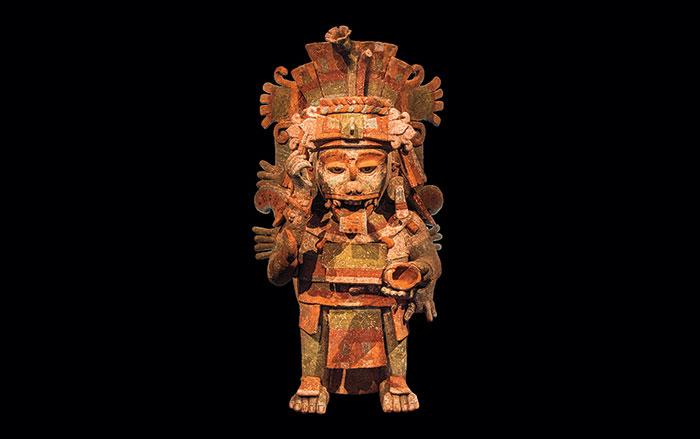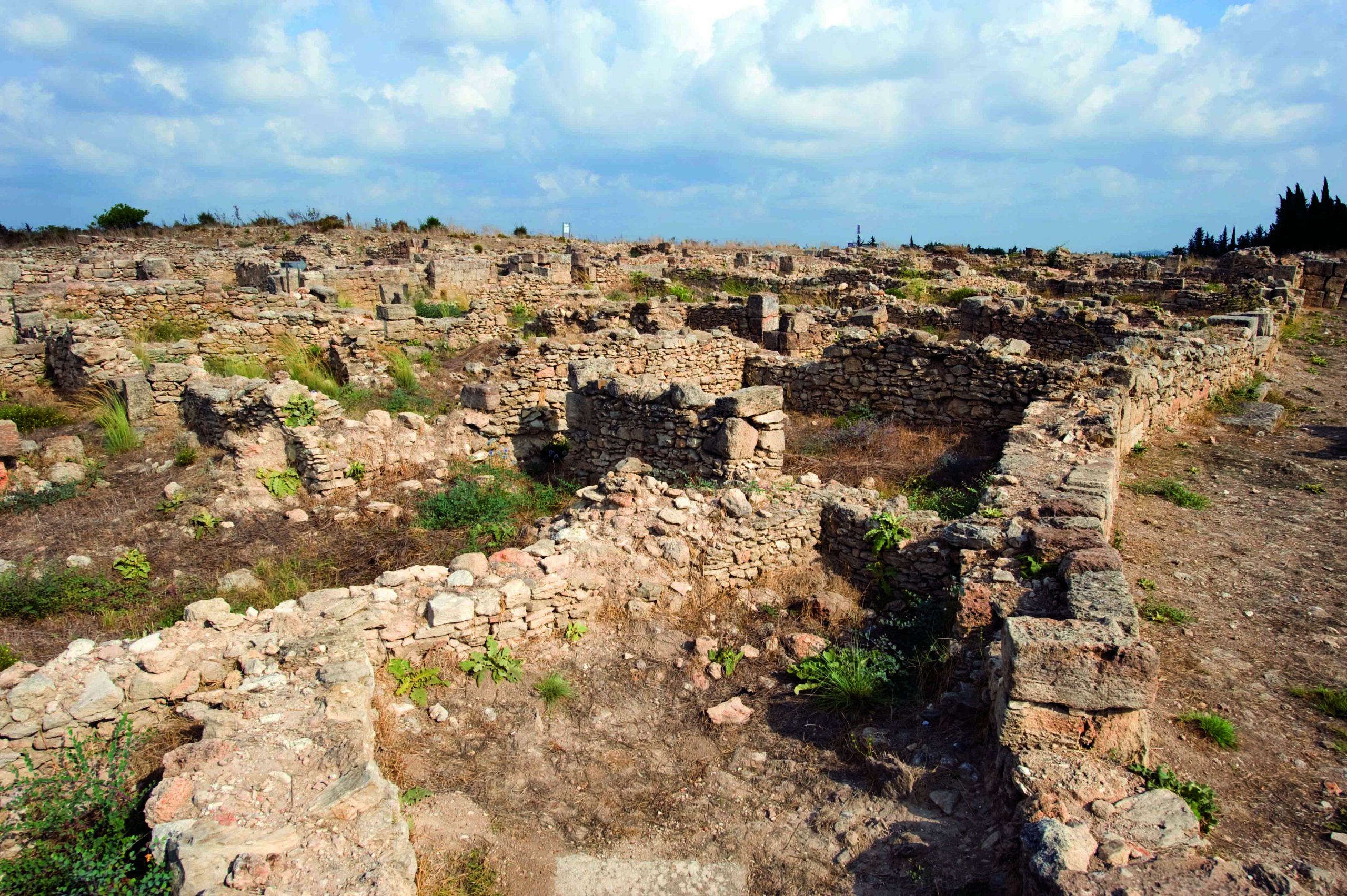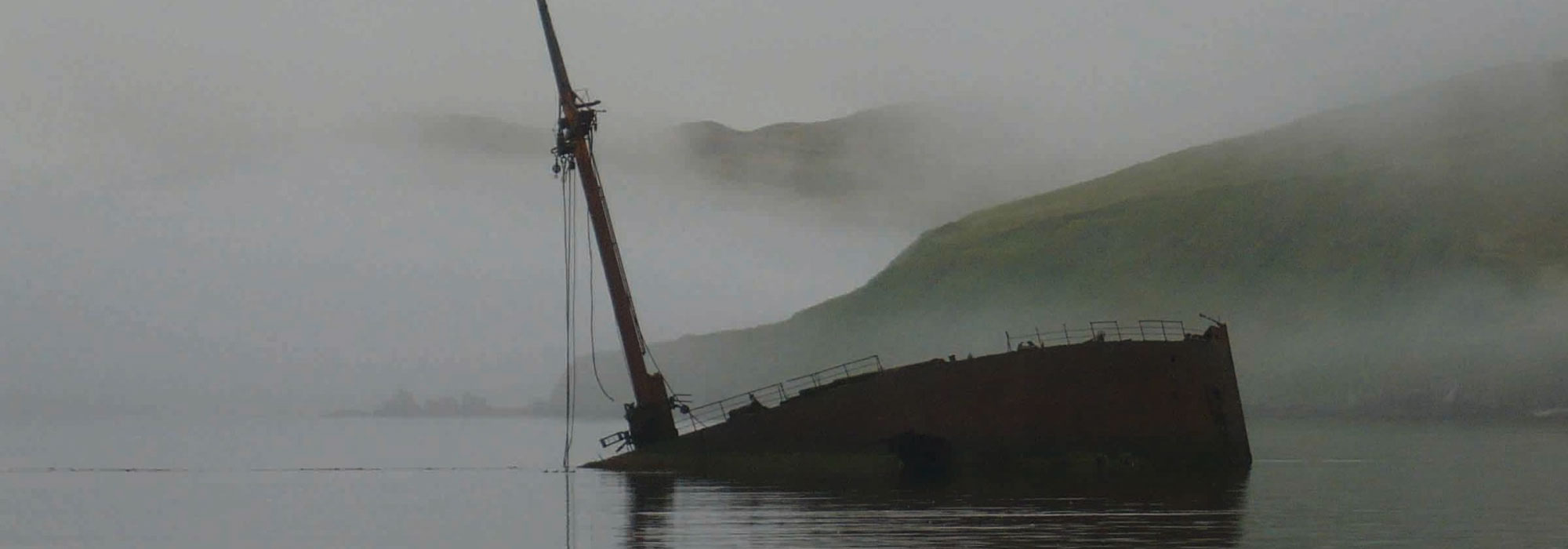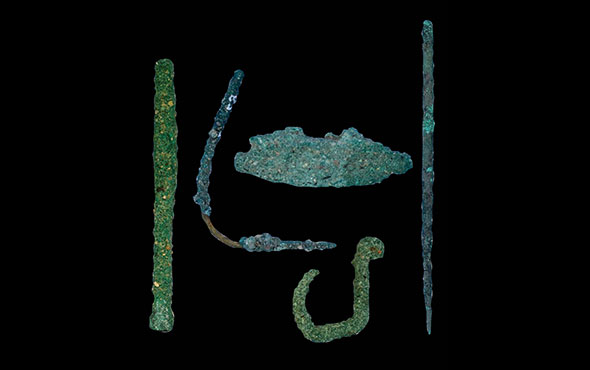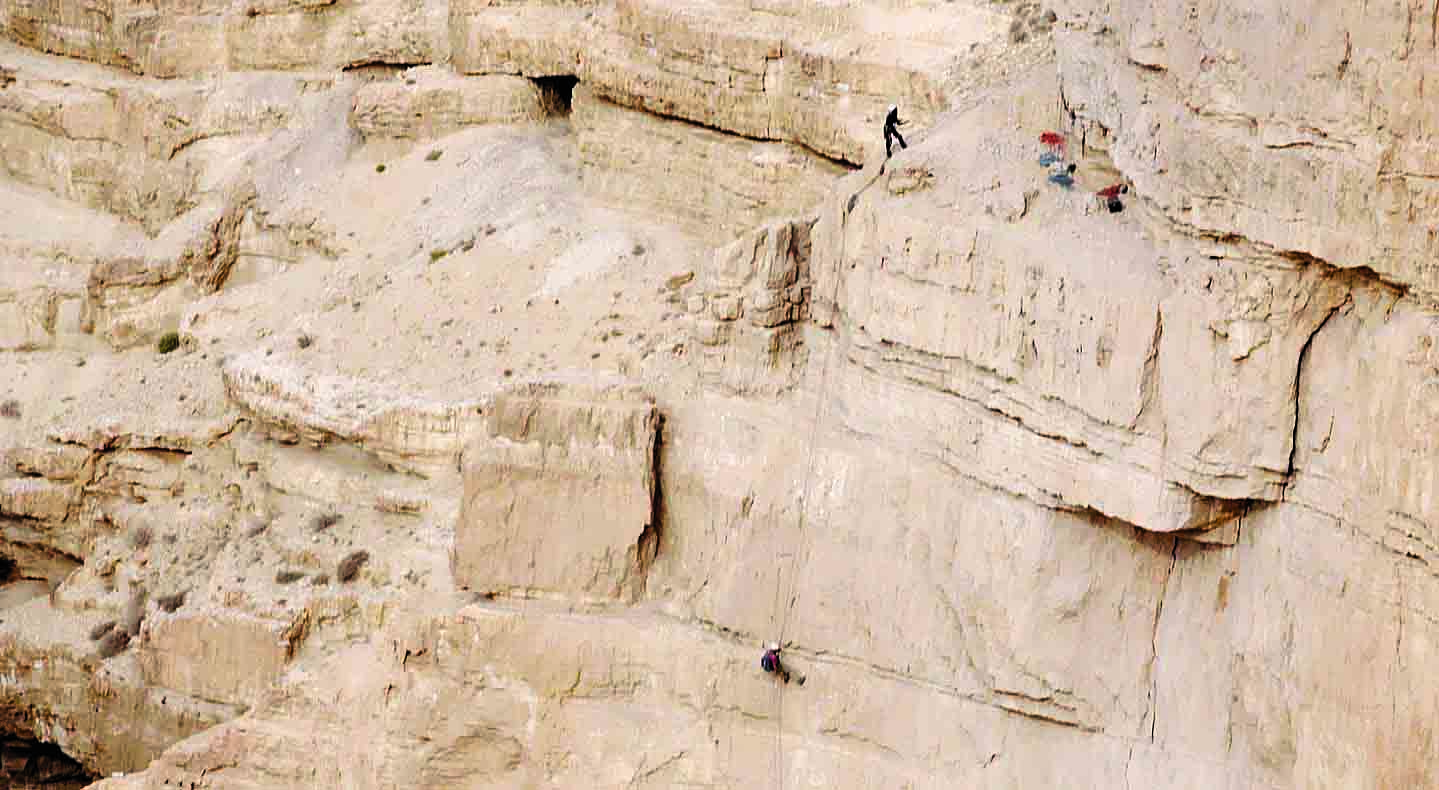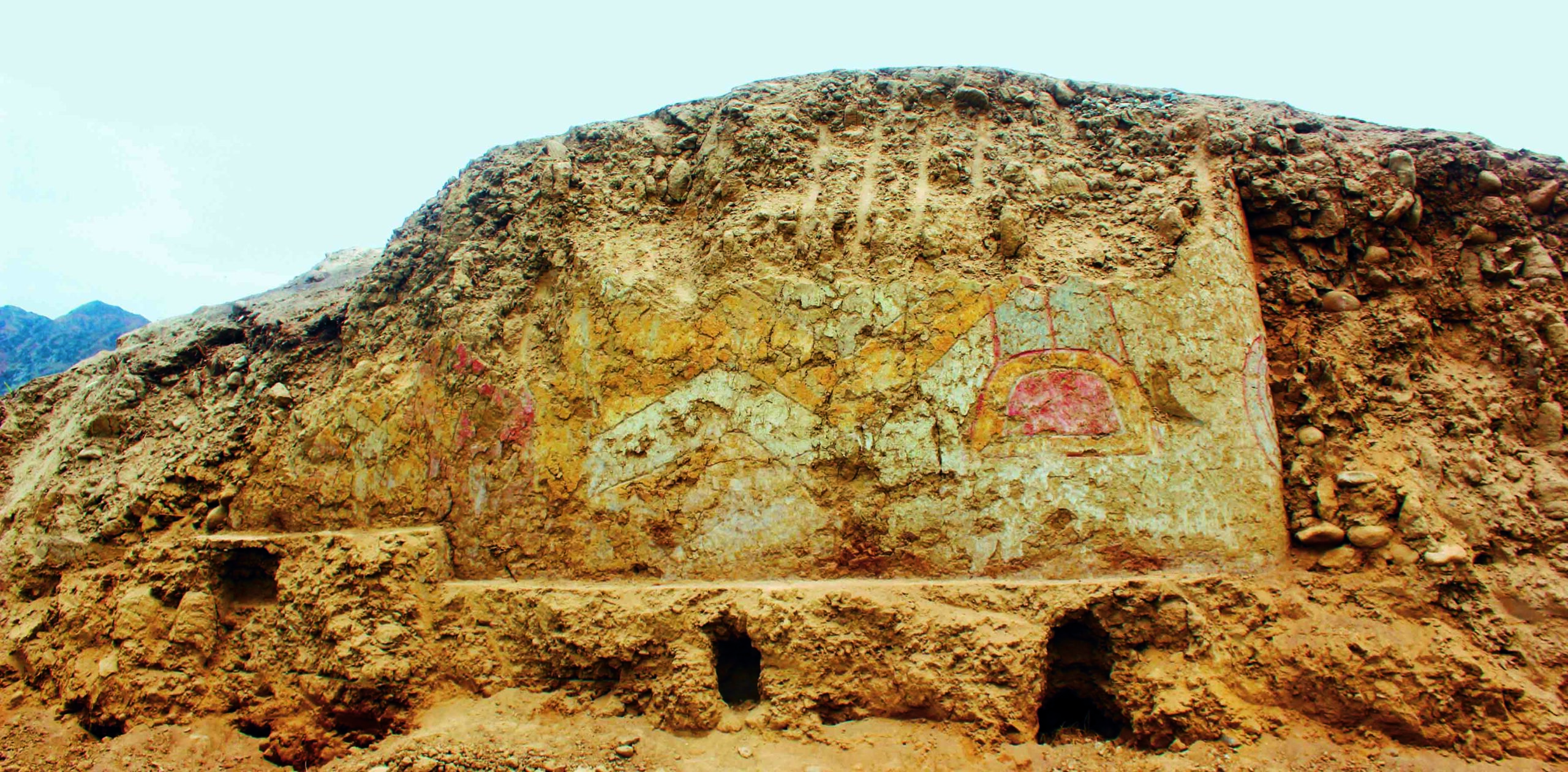On the night of June 24, A.D. 726, a Maya official named Ajpach’ Waal reached the pinnacle of his career. On that day, he was granted an audience with the thirteenth king of Copán, known to scholars today as 18 Rabbit, but to his subjects as Waxaklajuun Ub’aah K’awiil. Situated in a mountain valley in what is today western Honduras, Copán was one of the great Maya city-states. Even now its central plaza is covered with stelas, some standing more than 30 feet tall, which are carved with hieroglyphs that record the deeds of Copán’s kings. A six-story staircase leading to a ritual platform at the city’s center is composed of blocks carved in the shape of hieroglyphs that describe the city’s history. 18 Rabbit was responsible for building the staircase’s lower half, which he dedicated in his father’s honor.

It is possible the king received Ajpach’ Waal atop this staircase, just as he might have received his royal courtiers or other subjects. But Ajpach’ Waal was different from the officials and most of the other people 18 Rabbit encountered on a daily basis. He wasn’t from anywhere close to Copán, which lay on the far eastern edge of the Maya world. Ajpach’ Waal’s home was the city of El Palmar, a 200-mile journey to Copán over rugged terrain. Why he had made such a long and arduous trip, which probably took at least a month on foot, isn’t entirely clear. But given the dangers involved in this trek, which took him across mountains and through the territory of other Maya city-states, it is likely he was on an important mission.
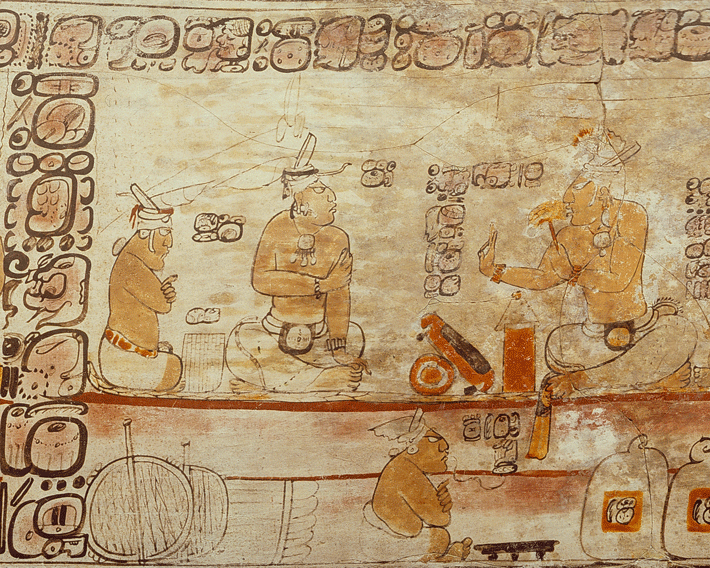
What happened when Ajpach’ Waal spoke with 18 Rabbit was not recorded, but the journey and the meeting were momentous enough to have been memorialized on a monument unlike any other yet found from the ancient Maya world. On September 14, just shy of three months after his audience with Copán’s king, Ajpach’ Waal dedicated his own nine-foot-tall hieroglyphic staircase, which was attached to a temple at El Palmar. First discovered by University of California, Riverside, archaeologist Kenichiro Tsukamoto and his team in 2009, the staircase is composed of blocks carved with hieroglyphs that celebrate Ajpach’ Waal’s lineage, his journey to Copán, and his relationship to the king of El Palmar as well as to the ruler of the mighty city of Calakmul, some 30 miles to the west. It also references Ajpach’ Waal’s official title of lakam, or “bannerman,” an obscure term that Mayanists have speculated about since it was deciphered three decades ago. “We’ve never seen something monumental built to celebrate a lakam,” says Tsukamoto. “We weren’t even certain what role lakam played in the Maya world.”
The discoveries of this staircase and the nearby burial of a man in his 50s who in all likelihood is Ajpach’ Waal himself are giving archaeologists a chance to write the biography of a lakam who lived during a time dominated by extraordinary political events in which he may have participated directly. While exploring Ajpach’ Waal’s life history, Tsukamoto and his colleagues have found that the tale told by his elaborate hieroglyphic staircase and the reality laid bare by what are likely his skeletal remains are, in fact, quite different and speak to the tumultuous times in which this lakam lived and died.
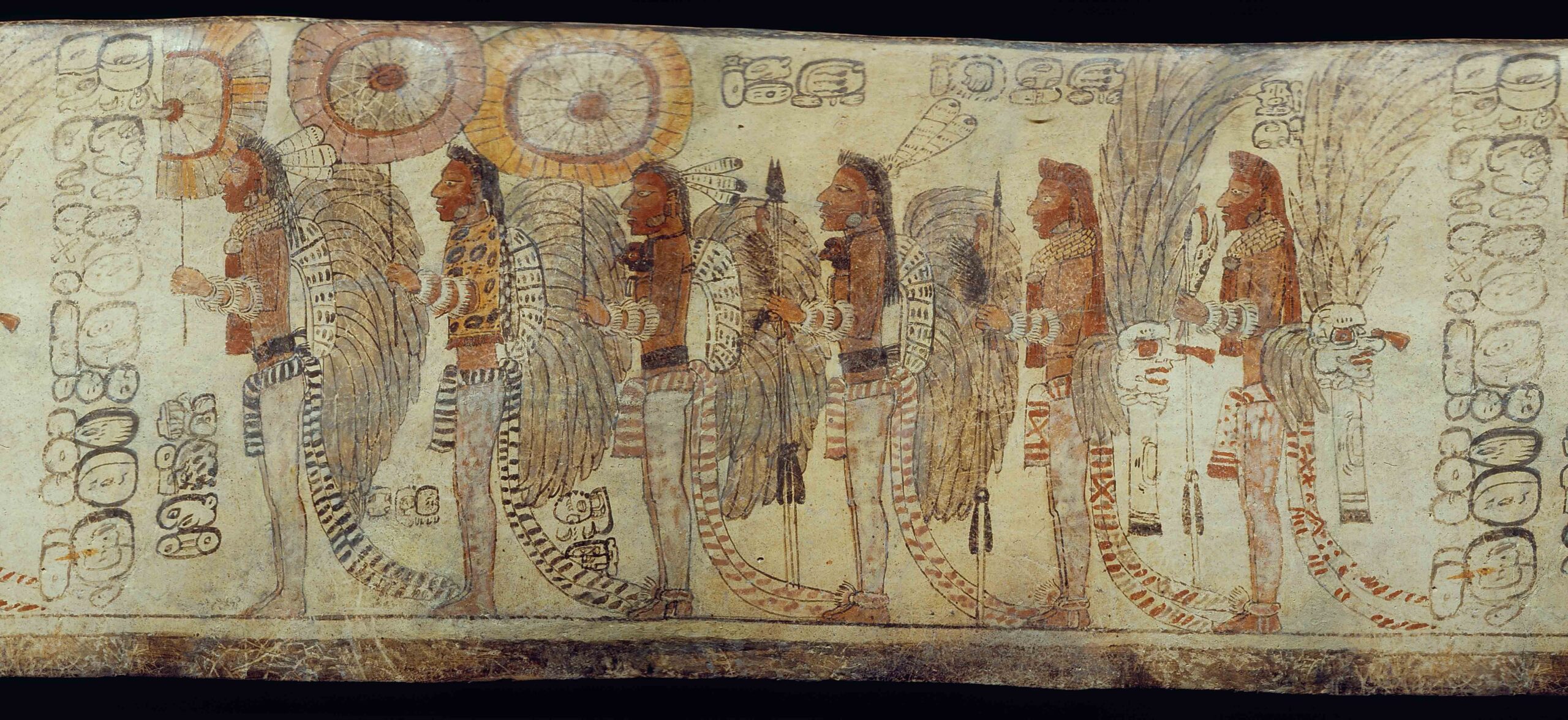
After their rediscovery in the nineteenth century, Maya hieroglyphs long resisted decipherment. Only in the 1980s were epigraphers able to begin accurately reading large numbers of Maya hieroglyphs, many of which record historical events. This breakthrough allowed Mayanists to partially reconstruct the political history of the Classic Maya city-states that thrived from around A.D. 250 to 900. A picture emerged of dozens of separate, often competing, kingdoms that formed constantly shifting alliances. The kings of the two largest cities, Calakmul and Tikal, clashed in a series of wars. These two superstates drew much of the rest of the Maya world into their long-running dispute.

The decipherment of any unknown glyph can change the trajectory of scholars’ efforts to understand this complicated history. Around 1990, University of Texas at Austin epigrapher David Stuart deciphered a Maya hieroglyph that phonetically spelled the word “lakam,” which in modern Yucatec Maya means banner or flag. He found the hieroglyph paired with the word for stone, and, when placed together, the hieroglyphs stood for the word meaning stela. “The Maya understanding of a stela is a stone flag,” says Stuart. “So we had the word ‘lakam’ and understood it as an upright monument.” With the glyph for lakam translated, Stuart and other Mayanists began to notice that “lakam” was used in another, albeit very rare, context. A handful of ceramic vessels were painted with the lakam glyph next to depictions of men sometimes sitting near kings in courtly settings. The late epigrapher Alfonso Lacadena of the Complutense University of Madrid proposed that lakam occupied an as-yet-unknown category of official or noble. They may have been men whose social standing lay somewhere between the nobles of the royal court and the mass of Maya commoners. Some of these lakam were depicted speaking with the king, often with bags of goods nearby. One example showed the lakam as part of a war party. Perhaps, proposed Lacadena, lakam were the king’s flag bearers, officials responsible for collecting tribute or for administering military affairs. But depictions of lakam are so rare that it was difficult to know what they really did or how significant a role they played in Maya society.
That changed when Tsukamoto first surveyed a cluster of buildings called the Guzmán Group oriented around a small plaza about a mile away from the core of El Palmar. “We weren’t expecting to find anything particularly special there,” says Tsukamoto. “We wanted to see what life was like away from the city’s royal center.” Soon, however, the team discovered the hieroglyphic stairway, buried by just a few inches of soil, leading to a temple. The staircase was made up of 164 hieroglyphic limestone blocks, each measuring about a foot tall, organized in six steps that stretched more than 30 feet wide. “It was intact and a real surprise,” says Tsukamoto. “You don’t expect to find a monument of this quality decorated with so many hieroglyphs in such a modest neighborhood.”
Tsukamoto and a colleague, epigrapher Octavio Q. Esparza Olguín of the National Autonomous University of Mexico, began to decipher the hieroglyphs, working separately so as not to influence each other’s interpretation. They expected the inscription to celebrate the deeds of the king of El Palmar. And, indeed, the staircase referenced the monarch, but it also prominently featured the lord of the mighty city of Calakmul, whose kings were known as the Kaan, or Snake, Dynasty. Even more puzzlingly, the inscription didn’t focus on either king, but on a lakam. Glyph by glyph, Tsukamoto and Esparza Olguín discovered that the staircase celebrates the lineage of Ajpach’ Waal, who is identified as the most recent of five generations of lakam to serve the king of El Palmar. The central event of the narrative is Ajpach’ Waal’s journey to Copán, apparently under the auspices of the king of Calakmul. The glyphs suggest that the kings of both El Palmar and Calakmul attended the monument’s dedication. The staircase itself faced not toward the center of El Palmar, but to the west, in the direction of Calakmul, which could allude to Ajpach’ Waal’s open allegiance to the Snake Kings. If Ajpach’ Waal made his journey to Copán at the king of Calakmul’s behest, perhaps, thinks Tsukamoto, he was there to broker some kind of alliance between Calakmul and Copán against Tikal, the Snake Kings’ mortal enemy.
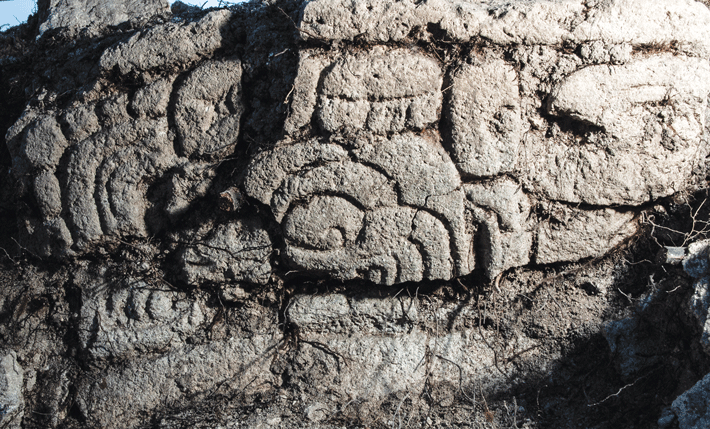
If so, the diplomatic mission must have been a success, or must at least have been resolved in such a way that Ajpach’ Waal commemorated the journey in an unprecedented way—by commissioning a hieroglyphic staircase celebrating the achievements of a nonroyal official. Initially, other Mayanists questioned Tsukamoto and Esparza Olguín’s interpretation. “I thought it was far-fetched that Copán would be mentioned on a monument like this. It’s just so specific, and so far away from Copán,” says Stuart. “But when I saw it for myself, there was just no question that they got it right.”
Stuart also notes that the fact that the staircase tells the story of an epic trip raises intriguing questions about the monument itself. The Maya verb used to denote making such a journey translates into English as “to go up.” “It’s like we might say, ‘I’m going up to Boston,’” says Stuart. To represent this verb, the Maya used a glyph of a staircase. “The main event this staircase celebrates is a journey that’s written as a staircase,” says Stuart. “I wonder if this physical staircase was emblematic of the journey itself. He would also have had to go up a lot of mountains to get to Copán, and the staircase could represent that as well. The Maya often sent many layered messages with their monuments.”
The knowledge that Ajpach’ Waal undertook some kind of diplomatic mission in the service of the king of Calakmul is bringing the roles lakam played in ancient Maya society into sharper focus. “We had questions about the lakam, and it remains a fairly rare title,” says Stuart. “But the thing with these glyphs is, it couldn’t be clearer what he was doing.” As a diplomatic official, perhaps Ajpach’ Waal was a metaphorical banner for the king, or perhaps he even carried a banner or standard of some sort as he traveled and engaged in diplomatic rituals at foreign capitals. Portions of the inscription even suggest Ajpach’ Waal’s mother was of royal descent. This lakam, it seemed, was an important man who played a critical role not just in El Palmar, but in courts far beyond the borders of his city.
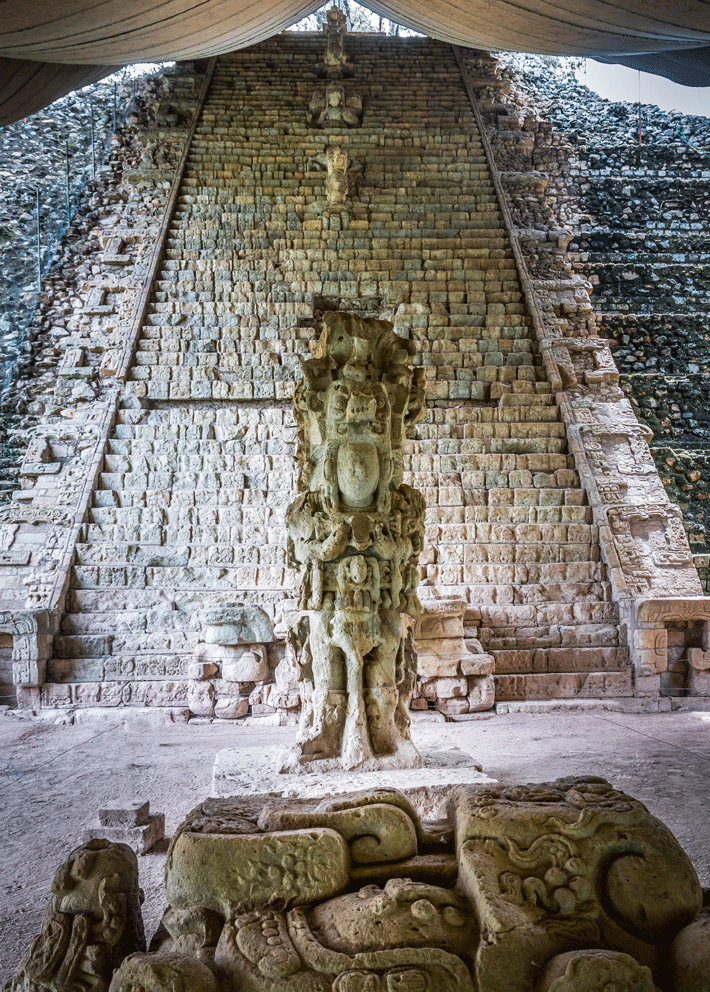
Once Tsukamoto and Esparza Olguín identified Ajpach’ Waal as a key diplomat, Tsukamoto became eager to excavate the platform behind the staircase, which he thought might hold the remains of the official himself. “Based on the splendor of the staircase, we expected to find a spectacular burial or a tomb with rich offerings,” says Tsukamoto. Instead, his team found only a modest stone chamber containing two ceramic vessels and the remains of a man. This is presumably Ajpach’ Waal, although radiocarbon dating of charcoal found around the bones suggest that they could possibly belong to his father. One vessel is decorated with a painting of a priest performing a fire ritual, framed by hieroglyphs. The glyphs are gibberish symbols painted by an artist who was probably illiterate, likely not one of those who carved the staircase’s splendid blocks. Ajpach’ Waal’s bones, however, speak volumes.
University of Oklahoma bioarchaeologist Jessica I. Cerezo-Román analyzed the remains and found that Ajpach’ Waal led a long and sometimes grueling life. “The bones can tell us so much,” she says. “They reflect the life of someone who grew up in perhaps politically unstable conditions.” Cerezo-Román discovered that Ajpach’ Waal’s bones show signs of malnutrition and possibly scurvy. Evidence of trauma in his shinbones is consistent with injuries suffered by people who play contact sports today, suggesting he may have been frequently injured playing the Maya ball game. “Two of the glyphs in the staircase depict ballplayers,” says Cerezo-Román, “and these injuries seem to confirm he participated in the game.”
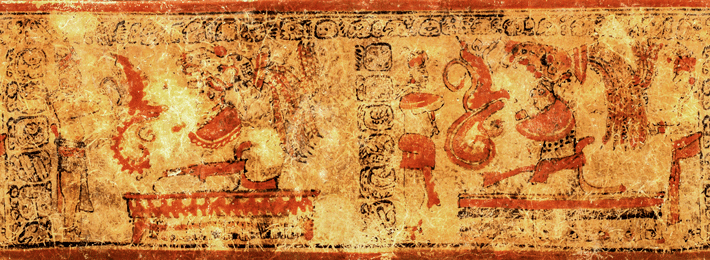
Cerezo-Román also found that Ajpach’ Waal suffered from severe arthritis in both his arms and legs. “This is the kind of arthritis we see today in old people,” says Cerezo-Román. “It also suggests that he was engaged in strenuous activity, perhaps from walking many miles over rough terrain. He likely walked up and down large monuments regularly, and may have often crouched in subservient positions in front of higher-status individuals.” The arthritis in his elbows could even have been caused by long periods of holding a banner aloft.
Most telling, though, is the state of Ajpach’ Waal’s teeth. Like other ancient Maya of high status, his teeth were decorated with jade and pyrite inlays inserted during multiple painful and likely expensive procedures. One inlay in a prominent front tooth is missing. “At first I was afraid I misplaced it during our excavation,” says Tsukamoto. “But Jessica told me it had fallen out while he was still alive.” Dental calculus formed over the hole in the tooth where the inlay was once placed. “That’s enough to suggest that the inlay fell out well before he died,” says Cerezo-Román. Evidently, Ajpach’ Waal was not able to afford to replace the inlay, which would have been a serious blow to a lakam. “It would have been very embarrassing,” says Tsukamoto. “Like a politician or an actor missing a front tooth today, it would have been hard for him to get people to take him seriously while he was speaking in public.”
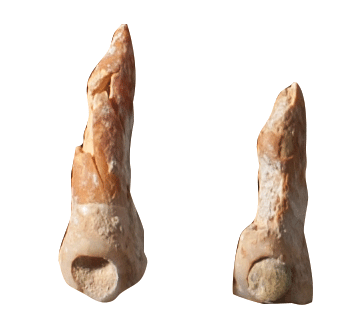
Together with his modest burial—not at all what one would expect to find in a tomb associated with such a fine hieroglyphic staircase—Ajpach’ Waal’s remains suggest his career may have taken a downward turn after his diplomatic coup of the summer of A.D. 726. Tsukamoto notes that just a decade after his mission to Copán, any agreement he might have brokered would have been in tatters. On May 3, A.D. 738, 18 Rabbit was captured and beheaded by rebels from the nearby city of Quiriguá. A stela erected in Quiriguá suggests the rebellion was supported by Ajpach’ Waal’s erstwhile patron, the king of Calakmul. Around that time, Calakmul itself fell to Tikal.
What El Palmar’s role was during these turbulent events is unclear, but Ajpach’ Waal himself probably lived to see the achievements celebrated on his staircase rendered obsolete. Perhaps his ties to the former king of Calakmul even became a liability and his status fell precipitously, leaving him unable to pay for a replacement inlay or a burial commensurate with his past accomplishments.
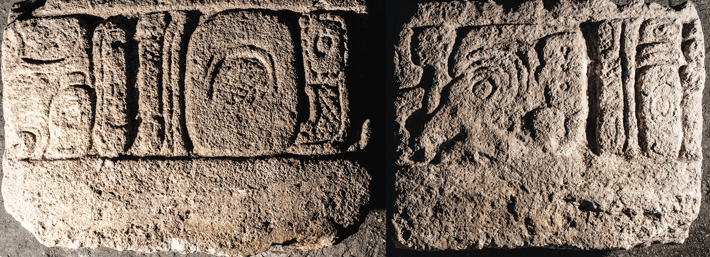
Ajpach’ Waal’s once-brilliant career illuminates the role that his fellow lakam played in the courts of the Maya world. “This was an utterly unexpected find, and it gives us a chance to reframe how we understand the lakam,” says Stuart. “It’s possible they were the glue that held these city-states together by negotiating these complex political relationships.”
Other remains from burials in the Guzmán Group have yet to be studied, but Cerezo-Román believes they likely belong to Ajpach’ Waal’s family. The Guzmán Group was probably his ancestral home, and his family may have continued to live there after his death. What happened to his descendants after he died, and whether they retained the title of lakam, is uncertain, but Cerezo-Román points out that while Ajpach’ Waal’s presumed burial was modest, it’s evident he was laid to rest with care. Charcoal discovered just above the tomb suggests a ritual fire ceremony was held there after the burial was complete. “This was done by people who probably loved him,” says Cerezo-Román. Tsukamoto notes that the staircase was maintained in good condition for many years after his death, suggesting that Ajpach’ Waal’s family may have treasured it as a reminder of his odyssey to distant Copán. Both his epic journey and Ajpach’ Waal’s remarkable monument were likely a source of stories that long outlived him.





